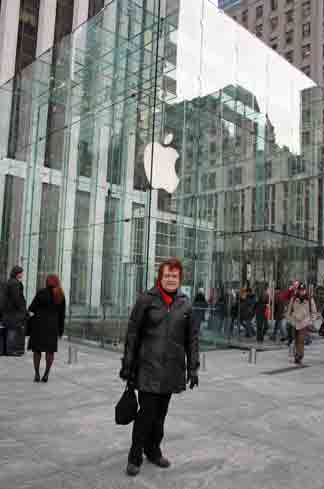I select convention sessions to attend based on session titles (and how many blocks I must walk if the session is another hotel). Participatory media is a phrase that now attracts my attention.
I noted this label for a 12:30 session and found that I was unable to get close to the door let alone gain entrance to the 40 person room. Perhaps folks are attracted when the speakers are Howard Gardner, Henry Jenkins and Carrie James. Who schedules this collection in a 40 person room? Division G needs more members so their sessions can be scheduled in larger rooms.
I tried the label again at 2:15 and had no difficulty finding a seat. There are probably several lessons here, but let me save comments on what such lessons might be until later. This session ended up considering adolescent media production in what I would regard as specialized and dedicated environments. The session featured presentations by “media literacy” types. I use the the word “types” from the amused perspective of sometimes being “typed” myself. At a generic level, it is true that I am a “psychologist” and hanging with my high school friends in rural Iowa it is interesting the reaction that this label generates. No, we are not all Freudians! In fact, potentially the most common application of Freudian interpretation is probably practiced by “media types”. Anyway, it is important to allow professionals their strange language and customs. “Poemness” was a new term for me, but hey, it is probably a couple of papers or presentations or possibly even a book for you. Such is the academic game.
This second session examined adolescent media production and used as a focus several impressive programs (Youth Radio, Reel Works, In Progress, Poetry For The People). The “subtext” for these programs is visible (note the effort to share the language of this culture) from terminology used to describe benefits and experiences – empowerment, social justice, identity development, marginalized youth.
What strikes me about the ideas you encounter at a conference like AERA is how broadly folks see concepts such as technology integration and participatory media. Our own writing about such topics assumes applications in core content areas and typical schools. Others view learning much more broadly both in terms of content and location.
So, I did not read the fine print and I did not look for “names” I recognized, but I did encounter some examples I could appreciate and some applications I endorse. An observation Cindy made in returning from Russia occurred to me. I think we think other educational systems focus on fact learning and neglect the development of creativity and other forms of higher order thinking. This is our explanation for international comparisons on NAEP exams (or similar international comparisons). To the contrary, creative projects are common in the student experiences we have observed in China, Japan, and now Russia. The opportunity for creative projects is somehow accommodated despite less impressive budgets. The participatory examples I have noted here were generated outside of traditional educational environments. Why is that?
Blogged with the Flock Browser
![]()
